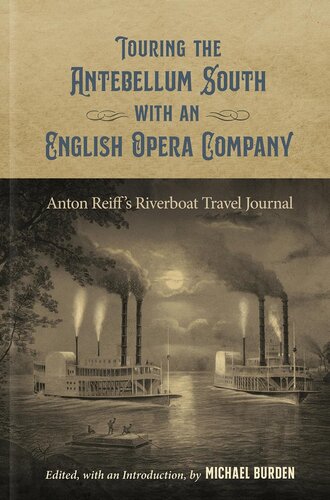

Most ebook files are in PDF format, so you can easily read them using various software such as Foxit Reader or directly on the Google Chrome browser.
Some ebook files are released by publishers in other formats such as .awz, .mobi, .epub, .fb2, etc. You may need to install specific software to read these formats on mobile/PC, such as Calibre.
Please read the tutorial at this link: https://ebookbell.com/faq
We offer FREE conversion to the popular formats you request; however, this may take some time. Therefore, right after payment, please email us, and we will try to provide the service as quickly as possible.
For some exceptional file formats or broken links (if any), please refrain from opening any disputes. Instead, email us first, and we will try to assist within a maximum of 6 hours.
EbookBell Team

5.0
90 reviewsThe diary of Anton Reiff Jr. (c. 1830–1916) is one of only a handful of primary sources to offer a firsthand account of antebellum riverboat travel in the American South. The Pyne and Harrison Opera Troupe, a company run by English sisters Susan and Louisa Pyne and their business partner, tenor William Harrison, hired Reiff, then freelancing in New York, to serve as musical director and conductor for the company’s American itinerary. The grueling tour began in November 1855 in Boston and then proceeded to New York, Philadelphia, Baltimore, Pittsburgh, and Cincinnati, where, after a three-week engagement, the company boarded a paddle steamer bound for New Orleans. It was at that point that Reiff started to keep his diary.
Diligently transcribed and annotated by Michael Burden, Reiff’s diary presents an extraordinarily rare view of life with a foreign opera company as it traveled the country by river and rail. Surprisingly, Reiff comments little on the Pyne-Harrison performances themselves, although he does visit the theaters in the river towns, including New Orleans, where he spends evenings both at the French Opera and at the Gaiety. Instead, Reiff focuses his attention on other passengers, on the mechanics of the journey, on the landscape, and on events he encounters, including the 1856 Mardi Gras and the unveiling of the statue of Andrew Jackson in New Orleans's Jackson Square.